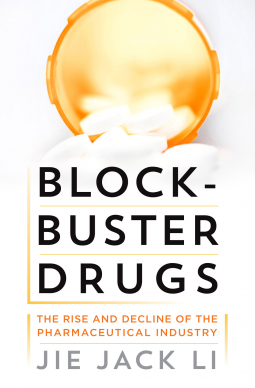
Blockbuster Drugs
The Rise and Decline of the Pharmaceutical Industry
by Jie Jack Li
This title was previously available on NetGalley and is now archived.
Buy on Amazon
Buy on BN.com
Buy on Bookshop.org
*This page contains affiliate links, so we may earn a small commission when you make a purchase through links on our site at no additional cost to you.
Send NetGalley books directly to your Kindle or Kindle app
1
To read on a Kindle or Kindle app, please add kindle@netgalley.com as an approved email address to receive files in your Amazon account. Click here for step-by-step instructions.
2
Also find your Kindle email address within your Amazon account, and enter it here.
Pub Date Jan 02 2014 | Archive Date Dec 10 2013
Description
For the world's largest prescription drug manufacturers, the last few years have been a harrowing time. Recently, Pfizer's Lipitor, GlaxoSmithKline's Advair, AstraZeneca's Seroquel, and Sanofi-Aventis and Bristol-Myers Squibb's Plavix all came off patent in the crucial U.S. market. This so-called "patent cliff" meant hundreds of billions of dollars in lost revenue and has pharmaceutical developers scrambling to create new drugs and litigating to extend current patent protections.
Having spent most of his career in drug discovery in "big pharma," Dr. Li now delivers an insider's account of how the drug industry ascended to its plateau and explores the nature of the turmoil it faces in the coming years. He begins with a survey of the landscape before "blockbuster drugs," and proceeds to describe how those drugs were discovered and subsequently became integral to the business models of large pharmaceutical companies. For example, in early 1980s, Tagamet, the first "blockbuster drug," transformed a minor Philadelphia-based drug maker named SmithKline & French into the world's ninth-largest pharmaceutical company in terms of sales. The project that delivered Tagamet was nearly terminated several times because research efforts begun in 1964 produced no apparent results within the first eleven years. Similar stories accompany the discovery and development of now-ubiquitous prescription drugs, among them Claritin, Prilosec, Nexium, Plavix, and Ambien.
These stories, and the facets of the pharmaceutical industry that they reveal, can teach us valuable lessons and reveal many crucial aspects about the future landscape of drug discovery. As always, Dr. Li writes in a readable style and intersperses fascinating stories of scientific discovery with engaging human drama.
Having spent most of his career in drug discovery in "big pharma," Dr. Li now delivers an insider's account of how the drug industry ascended to its plateau and explores the nature of the turmoil it faces in the coming years. He begins with a survey of the landscape before "blockbuster drugs," and proceeds to describe how those drugs were discovered and subsequently became integral to the business models of large pharmaceutical companies. For example, in early 1980s, Tagamet, the first "blockbuster drug," transformed a minor Philadelphia-based drug maker named SmithKline & French into the world's ninth-largest pharmaceutical company in terms of sales. The project that delivered Tagamet was nearly terminated several times because research efforts begun in 1964 produced no apparent results within the first eleven years. Similar stories accompany the discovery and development of now-ubiquitous prescription drugs, among them Claritin, Prilosec, Nexium, Plavix, and Ambien.
These stories, and the facets of the pharmaceutical industry that they reveal, can teach us valuable lessons and reveal many crucial aspects about the future landscape of drug discovery. As always, Dr. Li writes in a readable style and intersperses fascinating stories of scientific discovery with engaging human drama.
Available Editions
| EDITION | Other Format |
| ISBN | 9780199737680 |
| PRICE | $36.95 (USD) |



